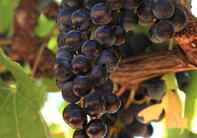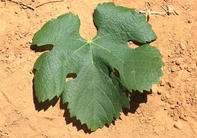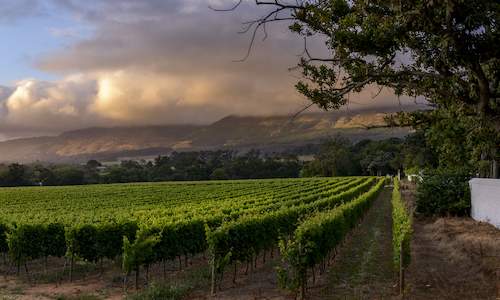Description
Merlot is a red wine variety that developed from a crossing of Cabernet Franc and Magdeleine Noire des Charentes. The variety’s name derived from a Bordeaux word that means “little blackbird”, either because these birds were of the same black bluish colour as the grapes or because they particularly preferred eating Merlot grapes.
Origins
The variety has been in the Bordeaux region of France since the early 18th Century. Production in France suffered numerous set backs since the 1950s, starting with a severe frost destroyed many Merlot (and Malbec) vines.
New vines were planted as replacements the year thereafter, but the majority of these were destroyed by rot. Each new planting attempt, seemed to be met with disaster.
The situation was so dire that the French authorities in 1970 placed a ban on the planting of new Merlot. The ban was lifted in 1975 due to the increasing popularity of the wines in the rest of the world.
Other Names
Merlot is often referred to as Merlot noir, to distinguish it from the distinctly different white wine variety called Merlot blanc. Other synonyms include Petite Merle, Merlau, Vitraille, Crabutet, Bigney, Semillon Rouge and Medoc noir.Production in South Africa
While the variety has been in the country since the 1920s, production only took off around the mid-1990s, because of its popularity in Cabernet blends and as single varietal wine. Production increased from only one hectare in 1979 to just over 5 550 ha in 2016. Overgaauw in Stellenbosch is credited as the first wine estate to release a wine made only from Merlot.Production Regions
Merlot performs well in cooler climatic regions on medium potential soils. Provision should be made for irrigation as the variety is highly susceptible to drought during ripening. It is planted throughout South Africa, with Stellenbosch having the biggest area under production, followed by Paarl.Growth and Ripening
The vines are moderately vigorous and have a trailing habit. Production averages around 8 t/ha and 12 t/ha. Berries ripen around mid-season, from the first half of March.
Berries and Leaves
Berries are medium sized, round and have a blueish black colour when ripe. The skin is thin and the flesh has a watery texture. Leaves are smooth, dark green, medium sized and five lobed.


 Mostly used in blends as a partner to the two Cabernets (Sauvignon and Franc), we do see that the New World has a huge appetite for single-v...
Mostly used in blends as a partner to the two Cabernets (Sauvignon and Franc), we do see that the New World has a huge appetite for single-v...